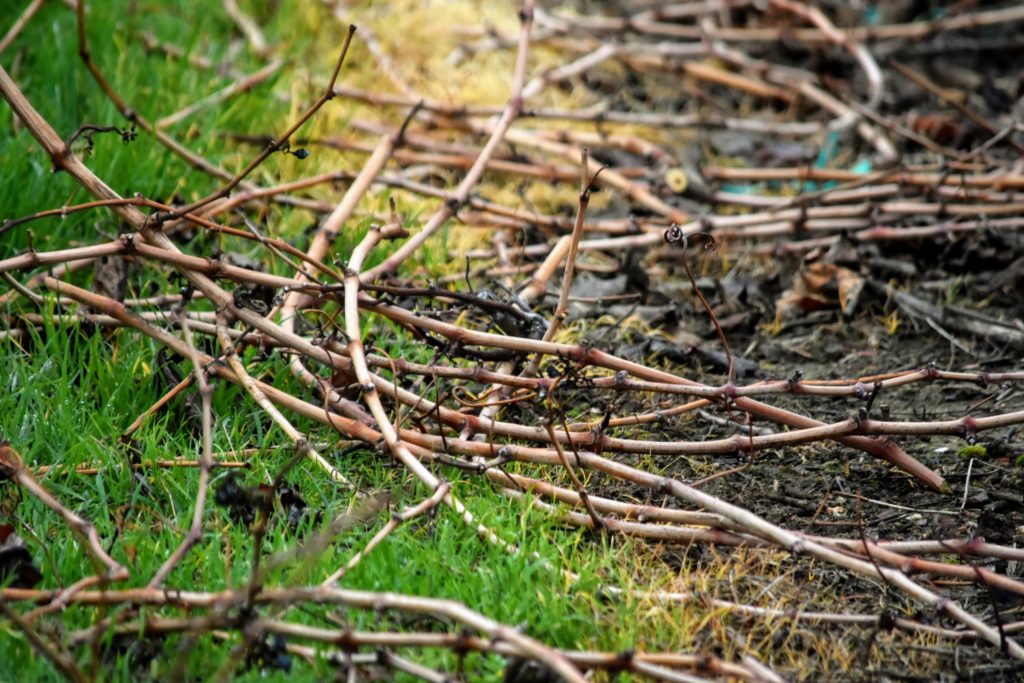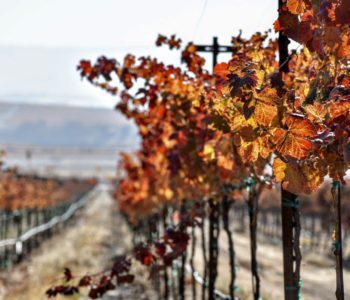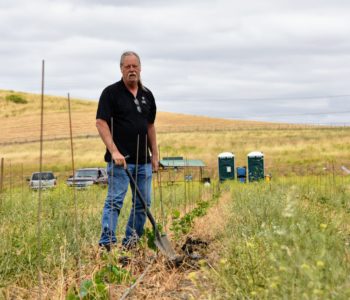 Vineyard Related
Vineyard Related
FEBRUARY 2020: Vineyard Dormancy, Maintenance, & Weather

By Laina Carter and Mark Clarin of McGrail Vineyards
February was an incredibly busy month in the vineyards, but unseasonably so, as our vines are currently dormant and February tends to be a pretty uneventful month for our vineyards. There are countless facets to grape growing and external factors affecting grapevines that no year and no season are ever the same.
Dormancy & Pruning
Grapevines, like most perennials, undergo a dormancy stage, which is essentially a hibernation period for these plants. The vines have stored all of their nutrients in their roots, leaving the once vivacious, fruitful shoots dry and void of leaves and fruit. Dormancy allows grapevines to tolerate winter weather and gives them time to prepare for budbreak in the spring. Like hibernating animals, the vines are waiting for warmer temperatures before once again using the energy they have stored up to become active and begin growing again.
The most critical vineyard practice that occurs during dormancy is pruning. For us, pruning usually happens around February, when the vines are completely bare and nearing the end of their dormancy. This year, we began pruning our estate vines at the end of January and continued with our Lucky 8 Vineyard through the beginning of February.
Each year, we prune last year’s growth back to the cordon. Our vineyards are currently pruned to two bud spur positions. These positions are kept approximately a fist apart along the cordon in order to keep the new shoot growth separated for later when the fruit sets.

Pruning is important because it gives us the ability to determine the number and position of shoots on the vine, and will therefore determine cluster count and quality of wine. The reason we prune back is to control consistency in production and to make sure we can still walk down the rows and properly manage the vineyard. There are many tasks throughout the growing season that require hand manipulation. Since grapevines are vines, they seem to have a mind of their own and want to grow in wild directions. Our trellis allows us to control the vines so that we can manage yields and quality.
Vineyard Re-Development
Our estate vineyard was originally planted in 1999 and is now at the end of its ideal productive life. We have sixteen and a half acres planted to Cabernet Sauvignon and it has, and still continues, to serve us well. At some point, the need to replant is fast-approaching, so we are taking out a section of approximately three acres this year to be replanted again in 2022. Since we have our new Lucky 8 vineyard coming into full production, it affords us the opportunity to re-develop our estate vineyard.


It takes about three years for new plantings to come into full production. It’s about a five-year process when you have to remove a vineyard, because you want to leave the ground fallow for a year. If we have to remove all 16.7 acres at once, we would lose production for five years. By doing it in small quantities, we will still be able to produce our cherished Patriot, James Vincent, A Jó Élet “the Good Life,” and Reserve Cabernet Sauvignon through the re-development phase. This February we began our vineyard re-development by removing about three acres of Cabernet vines at the front of our estate property. It will take up to ten years for us to replant the whole vineyard and up to twenty years to get back into full production.
Vineyard Drought
We are currently at the beginning of March, 2020 and we haven’t seen significant rainfall since early January, which is quite a bit different from what the last few winters we’ve experienced. December was fairly wet and we were on course to having a “normal” winter when the new year decided to change all that. We tried a little irrigating this past week to trick the vines into thinking it’s still winter. The windy weather has really dried things out and the hills are turning brown, which is very unusual for this time of year. We’re hoping this month brings rain again and more importantly, a decent snow-pack in the Sierra mountains, but time will tell. Until then, we will continue to irrigate as needed.
Unseasonably Warm Temperatures
On February 26th in 2018, there was snow on Mt. Diablo and snow on Mt. Hamilton, which is wildly different from the weather we experienced on the same day this year, with sunshine and a high of 76˚F.

Although we have had some warm late winters in years past, these temperatures can be of concern for grape growers. Air temperatures of 50°F are the threshold of below which grapevines refuse to grow. This means that enough days with a mean air temperature of 50°F or above could cause budbreak in the vineyards. Since an earlier budbreak during a warm late winter hasn’t really happened for us before, we aren’t too worried; however, an early budbreak could result in damage to the vines if spring frost occurs. We are keeping our fingers crossed that our vines don’t come out of dormancy this week!
Grape growing is definitely not for the faint of heart.














